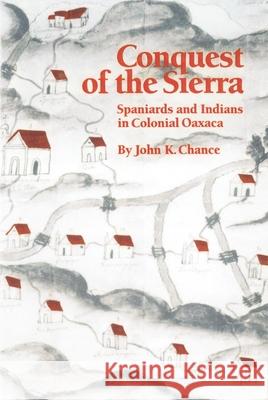Conquest of the Sierra: Spaniards and Indians in Colonial Oaxaca » książka
Conquest of the Sierra: Spaniards and Indians in Colonial Oaxaca
ISBN-13: 9780806133379 / Angielski / Miękka / 1990 / 252 str.
Conquest of the Sierra depicts the colonial experience in the Sierra Zapoteca, a remote mountain region of Oaxaca, in southern Mexico. This densely populated region is inhabited by Zapotec, Chinantec, and Mixe Indians, whose pre-Hispanic societies lacked the wealth, valuable craft economies, and intergration with trade networks found in the better-known societies of the neighboring Mixteca and the Valley of Oaxaca. Even during the colonial period the region remained remote. Its sole Spanish settlement, Villa Alta, never supported more than a handful of colonists, and haciendas and mining were of little importance. Yet through the Spanish system of forced production, the Indians of the Sierra became one of New Spain's leading producers of cochineal dyestuffs and cotton textiles. Based on unpublished and hitherto untapped archival sources, this book traces the evolution of a unique regional colonial society. The activities of Spanish political officials, merchants, and the clergy of Villa Alta are detailed, but the principal focus is one the Indian communities-their population, settlement patterns, economy, religious practices, and sociopolitical organization. Of special interest is the emergence of late colonial Zapotec elites and their role in the forced production and trade-the repartimientos de efectos-conducted by Spanish magistrates. The Sierra Zapoteca differed significantly from other regions of Oaxaca and central Mexico with respect to the process of conquest, economic integration, religious syncretism, and social stratification. Conquest of the Sierra shows how a relatively undeveloped pre-Conquest culture, coupled with a highly monopolistic colonial economy, produced a distinctive variant of indigenous society in colonial Mexico. John K. Chance is Associate Professor of Anthropology at Arizona State University
Conquest of the Sierra depicts the colonial experience in the Sierra Zapoteca, a remote mountain region of Oaxaca, in southern Mexico. This densely populated region is inhabited by Zapotec, Chinantec, and Mixe Indians, whose pre-Hispanic societies lacked the wealth, valuable craft economies, and intergration with trade networks found in the better-known societies of the neighboring Mixteca and the Valley of Oaxaca. Even during the colonial period the region remained remote. Its sole Spanish settlement, Villa Alta, never supported more than a handful of colonists, and haciendas and mining were of little importance. Yet through the Spanish system of forced production, the Indians of the Sierra became one of New Spains leading producers of cochineal dyestuffs and cotton textiles.Based on unpublished and hitherto untapped archival sources, this book traces the evolution of a unique regional colonial society. The activities of Spanish political officials, merchants, and the clergy of Villa Alta are detailed, but the principal focus is one the Indian communities-their population, settlement patterns, economy, religious practices, and sociopolitical organization. Of special interest is the emergence of late colonial Zapotec elites and their role in the forced production and trade-the repartimientos de efectos-conducted by Spanish magistrates.The Sierra Zapoteca differed significantly from other regions of Oaxaca and central Mexico with respect to the process of conquest, economic integration, religious syncretism, and social stratification. Conquest of the Sierra shows how a relatively undeveloped pre-Conquest culture, coupled with a highly monopolistic colonial economy, produced a distinctive variant of indigenous society in colonial Mexico.John K. Chance is Associate Professor of Anthropology at Arizona State University











